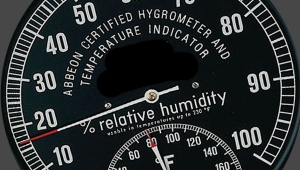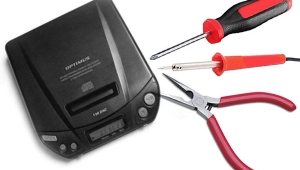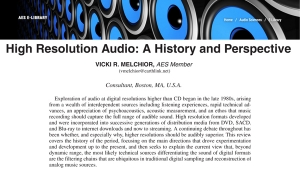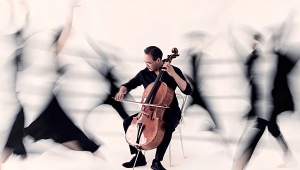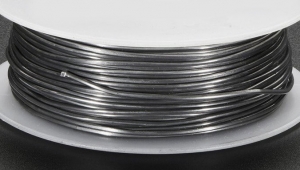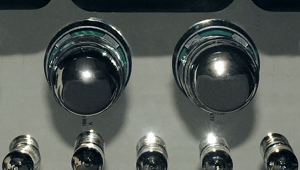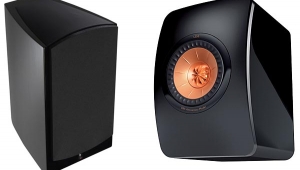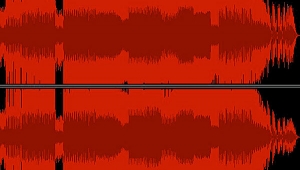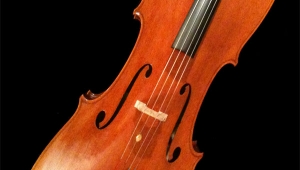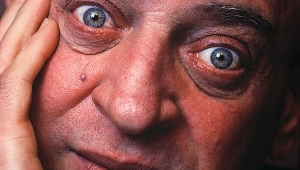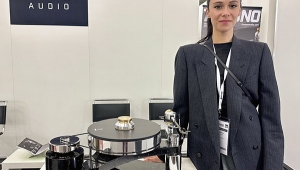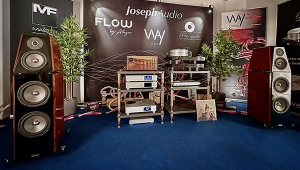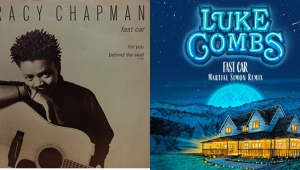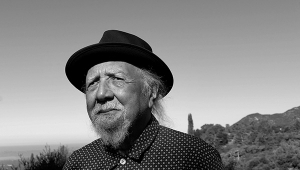| Columns Retired Columns & Blogs |
The Art of the Turntablist
Call me sentimental, but I'm sad to see turntables disappear. They were my original calling. Back in 1973 or so, when a kid from my neighborhood insisted that I see his brother-in-law's "fantastic stereo," I was entranced by a huge Pioneer receiver and walnut AR3a speakers. But most alluring by far was the Marantz turntable. Its brushed stainless-steel controls and gleaming, chromed tonearm made it look like some delicate and expensive scientific instrument. Compared to the all-in-one plastic unit I played my Partridge Family records on, the mere sight of it put me on the audiophile path. (And I mean just the sight of it. We weren't allowed to touch.) Eventually, his brother-in-law played a record for me—Gordon Lightfoot's Endless Wire. Since that day, I can chart the passage of my life according to the turntables I've owned—if it's VPI, this must be Chicago.
Now the conventional wisdom is that the turntable is going the way of rotary phones and the horse and buggy. But it's not really true. The turntable has undergone a paradigm shift (or something like it). It's still here, but in a different form.
What's a paradigm shift? Good question. For almost 40 years, Thomas Kuhn's concepts of paradigms and paradigm shifts, introduced in his book The Structure of Scientific Revolutions, have trickled into the parlance of business coaches and self-help gurus. But Kuhn left some unanswered questions about what, exactly, paradigms are. The best answer I've seen was above a urinal in a college men's room. Someone had sketched two busts of an English poet, a lake with two docks, and two coins: parakeets, paradox, and paradigms.
Kuhn said scientific revolutions occur when scientists abandon one way of understanding, seeing, and talking about nature (that is, one paradigm) and adopt another. Old concepts and procedures disappear as new ones quickly replace them. Instead of portraying the history of science as a gradual accumulation of knowledge—as almost all history books did at the time—Kuhn saw lurching, discontinuous leaps from one paradigm to another. In fact, he claimed, old and new paradigms are often so different that there's no valid yardstick of progress that marks new ones as advances over the old. That is, the reasons scientists cite for preferring one paradigm over another actually belong to the different paradigms in question. If there are no paradigm-independent yardsticks (and Kuhn said there aren't), then science isn't really getting better as time marches on, it's just getting different.
Whether or not Kuhn was right about science, something like this has happened with turntables. The paradigm shift has been happening for years, but I had no clue until I chanced on a DJ expo here in Chicago. DJs don't just play records anymore—they play the turntable as a musical instrument in its own right. "Scratching" first hit the mainstream on Herbie Hancock's song "Rockit" back in the '80s. Since then, scratching and "beat juggling" have grown into an elaborate set of techniques for coaxing all sorts of sounds and beats from turntables. When paradigms shift, so do words—DJs are now called "turntablists," and they're a mainstay of hip-hop culture. (What's that? You're a middle-aged guy who wears Dockers and doesn't know a thing about hip-hop? Try www.hip-hop.com and check out the turntablist/DJ links.)
Turntablists do their stuff in clubs and at competitions (or "battles") like the one I saw. The scene is an odd blend of music-making and sport. As if arriving to play baseball (the uniform is baseball cap and baggy jeans), turntablists come well equipped. They've got LPs, their favorite "slip mat" (which loosely couples the LP to the platter), and a box that holds a small arsenal of headshells and cartridges. Standing behind a row of Technics SL-1200s (the 'table of choice), two turntablists duel back and forth with 60- or 90-second performances. Judges pick the winner, who then advances to later rounds.
Beat jugglers commandeer a couple of turntables playing recorded beats. The trick is to vary their speeds and mix them into a pulsing symphony of drums and percussion, as if the contestant is conducting an entire rhythm section.
- Log in or register to post comments

